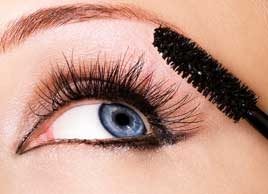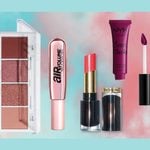Mascara 101
For those of us who won’t leave home without mascara, today’s innovative brushes offer many ways to define and enhance our eyes

Source: Best Health Magazine, November/December 2008
If, like me, you’ve sworn allegiance to the same mascara for as long as you can remember (in my case it’s just the right shade of jet black and it never irritates my contact-lens-wearing eyes), then you may be missing out on a lot of brush innovation, including products with spring action, rubber-like wands and, coming soon to a beauty counter near you, oscillating and vibrating mascaras (good luck using these in a car).
21st century mascara technology
The first wand-in-tube mascaras, which inspired the ones we use today, hit the market in the late 1950s. Until then, mascara was a cake formula applied with a separate mini brush. Fast-forward to the present: $112 million in mascara is sold in Canada each year, and this cosmetic-bag essential is the second most frequent makeup purchase by Canadian women (the first is lipstick), according to P&G Beauty. And while companies work to perfect their formulas (for example, the new volumizers and lengtheners contain wax particles, polymers and nylon fibres), the trend in mascaras is now on the brush technology.
Smooth wands
“Separation and no clumping” are the biggest needs of mascara wearers, says Sarah Vickery, Maryland-based senior scientist for CoverGirl. According to Vickery, until a few years ago, more than 98 percent of brushes on the market were the twisted-wire variety. A breakthrough was CoverGirl’s rubber-like thermoplastic elastomer brush.
“They’re more similar to the actual lash,” says Vickery. “The product flows off smoothly and doesn’t clump.”
But whichever mascara brand you gravitate to—the volumizers, the magnifiers, those with mousse-like texture, waterproof or regular—how you apply it is equally important.
Mascara application tips
Paul Venoit, a makeup pro at CoverGirl, has this advice:
- If there’s excess mascara on the brush, gently wipe it off on a tissue.
- Place the brush at the base of your lash line and begin to slowly brush through to the tips while gently rolling the applicator. To avoid a mess, keep your eye looking down until the mascara dries; if you apply it to your lower lashes, do them first.
- If you want to apply a second coat, wait about 30 seconds before reapplying.
- To “open up the eye,” add extra mascara to outer lashes and leave inner ones lightly coated—this brings attention to the outer corners, and creates wider-looking eyes.
Venoit also suggests always using an eyelash curler before applying mascara, and adds, “Don’t be afraid to experiment with colour mascaras. They can be fun and very flattering.”
Read about our top staff-tested mascara picks.
This article was originally titled "Magic Wands," in the November/December 2008 issue of Best Health Magazine. Subscribe today and never miss an issue!




